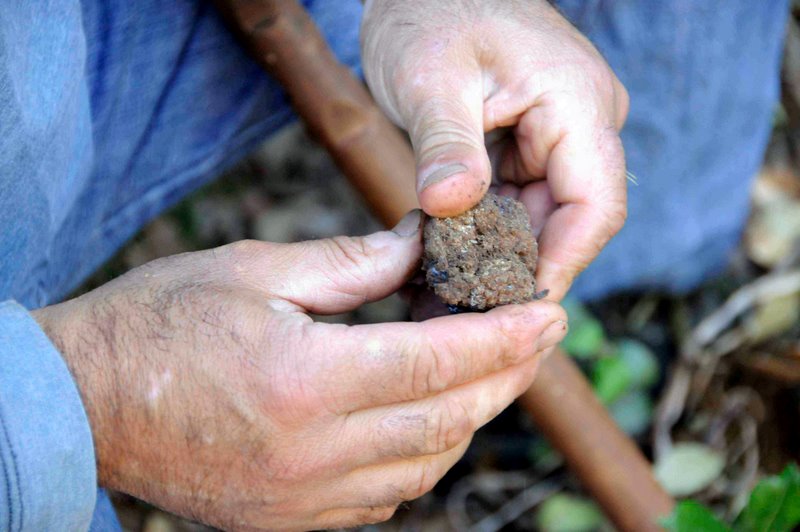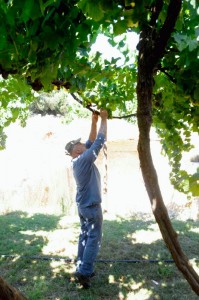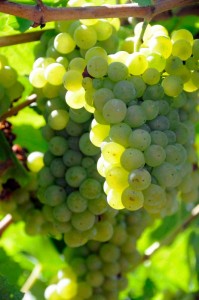For the first part of this article, see Truffle Hunting in Italy, Part I
The olive trees puff gently with wind from the nearby Adriatic Sea as we continue truffle hunting. Giuseppe points to a place where he saw a falcon the last time he was here. It quickly becomes apparent that Giuseppe’s dog, Rot, is the more dedicated hunter. Brioche begins to run off on a different search of his own. Rot, however, persists in unearthing truffles. After a while, Brioche gets back to business.
 The soil is not as dry as I would have expected with Puglia’s nearly rainless summers. This is due to an encompassing system of underground rivers that supply the region with water. The region’s soil is primarily composed of limestone, which is easily carved. That such a strange mixture of environmental factors results in the growth of truffles is baffling.
The soil is not as dry as I would have expected with Puglia’s nearly rainless summers. This is due to an encompassing system of underground rivers that supply the region with water. The region’s soil is primarily composed of limestone, which is easily carved. That such a strange mixture of environmental factors results in the growth of truffles is baffling.
After another half an hour, we’ve found a significant number of truffles: enough to fill both of Giuseppe’s hands. This is how he supplies his restaurant with fresh truffles. The name of his restaurant is Kebabb, and it is located in the coastal town of Torre dell’Orso. There, you can find fresh truffle year-round. You can add it to any dish on the menu for 2 euro. While nothing beats the white truffle for potency in my opinion, black truffles have an incredible flavor. And it’s nice to know that you can get a meal of fresh truffles year round in Puglia.
 To conclude our expedition, we drive to his vineyards for a pick-me-up of homemade, sparkling Chardonnay. The Chardonnay vines have been trained to grow in the tendone style: the vines grow high in the air and create a canopy in order for the leaves to shield the grapes from the sun. Walking beneath the canopy of vines, I ask Giuseppe why he grows his grapes this way. He answers, “For parties.” Of course, why didn’t I think of that.
To conclude our expedition, we drive to his vineyards for a pick-me-up of homemade, sparkling Chardonnay. The Chardonnay vines have been trained to grow in the tendone style: the vines grow high in the air and create a canopy in order for the leaves to shield the grapes from the sun. Walking beneath the canopy of vines, I ask Giuseppe why he grows his grapes this way. He answers, “For parties.” Of course, why didn’t I think of that.
Giuseppe may be one of the only winemakers currently growing and bottling Pinot Noir in Puglia, and his arduous endeavor creates a wonderfully rustic wine. Unfortunately, I don’t see it entering the world market anytime soon: He makes his wine for his restaurant.
 Seeing his small wine-making set up reminded me that Italian families have been making their own wine for thousands of years. I ate a chardonnay grape straight from the vine then drank a sip of the sparkling Chardonnay made from last year’s Chardonnay grapes. The wine-making process became momentarily transparent, the taste of one year intruding upon the next. It was as astonishing as snow in Los Angeles, and as pleasantly surprising as fresh truffles in Puglia.
Seeing his small wine-making set up reminded me that Italian families have been making their own wine for thousands of years. I ate a chardonnay grape straight from the vine then drank a sip of the sparkling Chardonnay made from last year’s Chardonnay grapes. The wine-making process became momentarily transparent, the taste of one year intruding upon the next. It was as astonishing as snow in Los Angeles, and as pleasantly surprising as fresh truffles in Puglia.


Comments